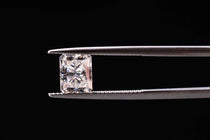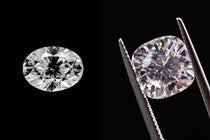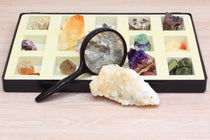When considering the visual aspects of objects and images, you might wonder whether color or clarity holds more significance. This debate extends across various fields, including photography, art, design, and even the technology of displays and monitors. Color enriches your perception, allowing you to distinguish between different objects and assess their qualities, whereas clarity pertains to the sharpness and detail that can be discerned. If you're in a profession where image quality is paramount, such as graphic design or photography, you'll often grapple with finding the right balance between vivid colors and crisp details.
The importance of color and clarity can vary depending on the context and the intent behind the image. In some cases, the colors might be crucial for conveying a mood or a message, making them the central aspect of your focus. For instance, marketers and brand designers heavily rely on the use of specific colors to elicit emotional responses from viewers. On the other hand, in scientific imaging or security footage, clarity may take precedence to ensure that fine details are observable and accurate.
This topic is not just relevant but also evolving with advances in technology. With the development of high-definition displays and sophisticated color calibration tools, the capacity to both present and perceive color and clarity has been enhanced. The way you experience visual media today is drastically different from the past, leading to new standards and expectations. Whether you lean more towards the vibrancy of color or the precision of clarity, it's clear that both elements play integral roles in how you interpret and value visual information.
Understanding Diamond Clarity and Color
When exploring the value and appeal of diamonds, both clarity and color play pivotal roles. Clarity refers to the presence of internal or external imperfections, known as inclusions, while color denotes the presence of a hue within the diamond.
The Significance of Clarity
Diamond clarity is a measure of the number and size of inclusions a diamond may have. These range from Flawless (FL) or Internally Flawless (IF) with no inclusions or blemishes visible under 10x magnification, to diamonds rated I1, I2, or I3, where inclusions are visible with the naked eye, often referred to as being not "eye-clean." VS (Very Slightly Included) diamonds, such as VS1 and VS2, contain minor inclusions that are difficult to see under 10x magnification. Similarly, SI (Slightly Included) diamonds include SI1 and SI2, where inclusions are more easily observed under magnification but may not always be visible to the naked eye.
Amongst the higher grades, VVS (Very Very Slightly Included) diamonds, which include VVS1 and VVS2, have minute inclusions that are challenging to detect even under magnification. A diamond's clarity can significantly impact its value, with higher clarity grades often commanding a higher price.
Color's Role in Diamond Beauty
The color of a diamond is assessed based on its lack of color. A pure and structurally perfect diamond has no hue, and higher value is placed on such specimens. The color grading scale ranges from D (colorless) to Z (light color). D color diamonds are the most devoid of color and are extremely rare and valuable. Moving down the scale, G color and H color stones exhibit virtually no color to the untrained eye but provide more budget-friendly options than colorless grades.
A diamond's color grading also accounts for the presence of a yellow tint or other hues and their intensity. At the lower end of the scale, diamonds with a noticeable yellow tint, such as those in the K to M range, are less valued. The hue and color can affect the diamond's appearance, especially in certain settings, and should match your personal preference and intended style of the diamond's setting.
Comparison of Clarity vs. Color

| Aspect | Diamond Clarity | Diamond Color |
|---|---|---|
| Definition | Refers to the presence or absence of internal flaws (inclusions) and surface blemishes (blemishes) in a diamond. | Refers to the absence of color or the presence of subtle color in a diamond, graded from colorless to light yellow or brown. |
| Impact on Appearance | Higher clarity diamonds generally have fewer visible inclusions, contributing to a cleaner and more transparent appearance. | Colorless diamonds (grades D-F) appear white and allow more light to pass through, creating a bright and sparkling appearance. |
| Grading Scale | Graded on a scale from Flawless (no inclusions or blemishes visible under 10x magnification) to Included (inclusions visible to the naked eye). | Graded on a scale from D (colorless) to Z (light yellow or brown). D-F are considered colorless, G-J near colorless, and beyond J, color becomes more noticeable. |
| Importance in Diamond Selection | Important for those who prioritize a clear and flawless appearance, especially in larger diamonds where inclusions may be more noticeable. | Important for achieving a desired level of whiteness or avoiding a yellowish tint. Color preferences may vary based on individual tastes and cultural influences. |
| Factors Affecting | Natural characteristics formed during a diamond's growth process, including crystals, feathers, and other inclusions. | The presence of trace elements, such as nitrogen, can impart color to diamonds. Some diamonds may also exhibit fluorescence under UV light. |
| Price Considerations | Higher clarity diamonds tend to be more expensive due to their rarity and the difficulty of achieving flawless or internally flawless grades. | Colorless diamonds (D-F) are generally more valuable, but within the near-colorless range (G-J), pricing is affected by personal preferences and the desire for whiter appearances. |
| Balancing Act | Some buyers may choose a balance between clarity and color, opting for diamonds with slightly lower clarity but higher color grades, or vice versa, based on budget and visual preferences. | The ideal balance depends on personal preferences and the desired appearance of the diamond. Some may prioritize color over clarity or vice versa. |
When selecting gemstones or jewelry, such as engagement rings, you must weigh the importance of color against clarity. These elements contribute uniquely to the piece's beauty and can affect the value and your budget.
Prioritizing Clarity or Color Based on Usage
Clarity is paramount when you desire a gemstone with the least imperfections visible to the naked eye, known as eye-clean. In an engagement ring, where the diamond is often viewed up close, higher clarity can be more significant. Nevertheless, certain settings might mask minor inclusions, allowing you to allocate more of your budget toward color or size.
On the other hand, color commands attention and defines the gemstone's overall appearance. In jewelry where the stone's hue is a centerpiece, such as with colored diamonds or sapphires, the vibrancy and depth of color might take precedence over clarity. It's a balance, however, and your choice could depend on the metal of the setting; for instance, yellow gold can enhance warmer colored stones, while white gold or platinum might complement those with cooler tones.
Perception of Clarity and Color by the Naked Eye
Perceptions differ when assessing clarity and color with the naked eye. Clarity imperfections are often microscopic and may not detract from the stone's beauty unless scrutinized closely. The visual clarity and feeling of contrast are crucial, with high chroma indicating a vibrant, eye-catching color that could offset slight clarity issues.
Similarly, your budget also influences the balance between clarity and color. For example, an engagement ring with an eye-clean diamond in a rose gold setting might emphasize the cut and color over flawless clarity, offering a visually stunning piece without exceeding your budget. As such, understand that both clarity and color have roles in determining the beauty and value of jewelry, and your personal preference should guide your final decision.
The Impact of Shape and Cut on Clarity and Color

When selecting a diamond, you must consider how its shape and cut influence the appearance of clarity and color, as these factors greatly affect a diamond's brilliance and aesthetic.
Influence of Diamond Shape on Visibility of Imperfections
The shape of a diamond can significantly affect the visibility of inclusions and blemishes. Round diamonds, such as the round brilliant cut, are expertly designed to maximize brilliance, which can help mask slight imperfections. In contrast, the large, open facets of emerald-cut diamonds make inclusions more visible. Asscher and emerald shapes, with their step-cut facets, tend to reveal more clarity characteristics than rounded or curved cuts.
Pear-shaped diamonds or marquise cuts might show color or inclusions at their points. For shapes like princess and radiant, these can hide inclusions well, but might require higher color grades as their structure can sometimes retain color.
How Cut Quality Affects Diamond Clarity and Color
The quality of a diamond's cut has a profound impact on both clarity and color perception. A high cut quality enhances a diamond's brilliance and can make inclusions less noticeable. Essentially, the more brilliant the diamond, the less likely you are to notice small imperfections. For instance, a well-cut round diamond with many facets can reflect light in such a way that it masks some clarity issues.
Conversely, poor cut quality can exacerbate the appearance of both color and clarity flaws. If a diamond is cut too deep or too shallow, light leaks out from the sides or bottom, which can darken the diamond and make inclusions more noticeable. A diamond cut to ideal or excellent proportions ensures optimal light performance, contributing positively to the gemstone's overall appearance.
Making an Informed Diamond Purchase

When you're in the market for a diamond, understanding the balance between clarity and color can help you maximize value. These factors significantly impact the beauty and cost of your selection.
Evaluating Clarity and Color for Maximum Value
To determine which characteristic—clarity or color—is more crucial for your purchase, you must first grasp the basics. A diamond's clarity refers to the absence of inclusions and blemishes. Ranging from Internally Flawless (IF) to diamonds with noticeable inclusions (I1, I2, I3), the clarity scale provides a metric for measurement. On the other hand, color is graded on a scale from D (colorless) to Z (light color). In general, D grade diamonds are the most prized due to their rarity and visually colorless appearance.
Clarity might not be as crucial if the diamond’s inclusions are invisible to the naked eye. For some sizes and shapes, a certain level of clarity could be more important to ensure a brilliant sparkle. Conversely, the diamond's color can dramatically affect its appearance, especially in larger carat weights where color is more noticeable.
The Role of Expertise in Selecting Diamond Quality
Leveraging expertise is paramount – whether it’s yours or a professional’s – in the selection process. The Gemological Institute of America (GIA) offers guidance on both clarity and color to assist with informed decisions. Experts can help assess which characteristics are more noticeable in different diamond sizes or shapes, and thus advise on which C should carry more weight for your budget and preferences.
Practical Tips for Purchasing a Diamond Online
Purchasing a diamond online can be tricky, but it allows you to choose from a large selection of loose diamonds. Online vendors like James Allen provide high-resolution images that make it easier for you to gauge clarity and color. Here are some tips:
- Use high-quality images or 360-degree videos, if available, to inspect the stone.
- Check return and guarantee policies to ensure a safety net if the diamond doesn't meet expectations.
- Consider diamonds just below the desired carat weight to save money, as size differences can be negligible.
- Don’t overlook cut quality, which is equally important for a diamond’s brilliance and fire.
When it comes to engagement rings or any significant jewelry purchase, your awareness of these elements leads to a more confident choice.
Considerations Beyond Clarity and Color

When selecting a diamond, you must also weigh other significant factors such as carat weight, material choice, and durability—all of which contribute to the overall value and aesthetic of the gemstone.
Evaluating the Impact of Carat Weight on Clarity and Color
Carat weight significantly influences both the clarity and color of a diamond. It's crucial to understand that as the carat weight increases, any inclusions or color tints become more noticeable. Conversely, a larger carat weight can also amplify a diamond's brilliance, potentially offsetting slight color differences. When assessing diamonds, consider how the carat weight might enhance or detract from clarity and color attributes.
Material Choices Affecting Diamond Presentation
The setting and material of a ring play pivotal roles in complementing a diamond's features. For example, the use of platinum or white gold tends to accentuate the gem's clarity and can make colors appear more vibrant. In contrast, yellow gold can warm up a diamond, which may be beneficial for stones with a slight color, whereas rose gold introduces a unique hue that often pairs well with vintage settings and a certain range of color gradations. The type of setting also affects appearance—prong settings can allow more light to enter the diamond, enhancing its color and clarity.
Understanding How Flaws Can Affect Long-Term Durability
Diamonds are renowned for their hardness; however, they are not impervious to damage. Flaws such as inclusions and surface blemishes can impact a diamond's durability. For instance, a gemstone with significant inclusions, particularly types of inclusions located near the edges, could be more prone to chipping. It's also essential to account for the durability of your setting, as it protects the diamond and ensures the longevity of your investment.
Conclusion
Determining whether color or clarity is more important depends on your application and context. For visual designs, such as in PowerPoint graph slides, perceptions of clarity and attractiveness can significantly influence the effectiveness of communication.
In contexts where precise color communication is vital, advancements in color theory suggest that variables like vividness and background lightness play a crucial role. Having a color and background with the same lightness can lead to colors appearing less vivid, which may affect their impact (Extending CIELAB: Vividness, depth, and clarity).
Visual presentations benefit from:
- High chroma colors
- Optimal contrast levels
- Balanced color combinations
Given these aspects, you should consider that high chroma and the right contrast are key for the feeling of visual clarity and contrast. The preference for either color or clarity is not absolute but relative to the specific demands of the task at hand.
In the end, achieving the right balance between color and clarity will provide you with the desired outcome. Use these principles as guidelines to tailor your choices and enhance the overall effectiveness of your visual materials.
Also Read
Frequently Asked Questions
When choosing a diamond, you must consider factors such as color and clarity as well as how they interact with each other. This affects the stone's appearance, sparkle, and value.
What determines the importance of color versus clarity in engagement rings?
Color and clarity in engagement rings are important because they influence a diamond's overall aesthetic. Generally, color may be more noticeable to the unaided eye, whereas clarity imperfections often require magnification to be seen.
How does the choice between clarity and color affect a diamond's sparkle?
A diamond's sparkle is mainly affected by cut, but color and clarity play a role too. High clarity means fewer blemishes and inclusions, improving transparency and brilliance, while color can impact the diamond's ability to reflect light.
In terms of value, should diamond cut, color, or clarity be prioritized?
For value retention, diamond cut quality should generally be prioritized as it most influences a diamond's brilliance. After cut, prioritize color and then clarity, as most clarity features are invisible to the naked eye.
How does the importance of color and clarity differ among diamond shapes?
Different diamond shapes showcase color and clarity uniquely. For example, round diamonds are brilliant enough to mask slight color tints, whereas step-cut shapes like an emerald cut require higher clarity due to their expansive table that can make imperfections more visible.
Do experts recommend prioritizing color or clarity for an emerald cut diamond?
Experts might suggest prioritizing clarity for an emerald cut diamond because an emerald cut's larger, open facets can make inclusions more apparent compared to other cut styles.
How critical is clarity in a diamond's overall appearance?
Clarity is one of the critical aspects that can impact a diamond's appearance to an extent. Flaws not visible to the naked eye may not impact the visual appeal, suggesting that perfect clarity is not always necessary for a diamond to look stunning.
Checkout some of our top collections:







